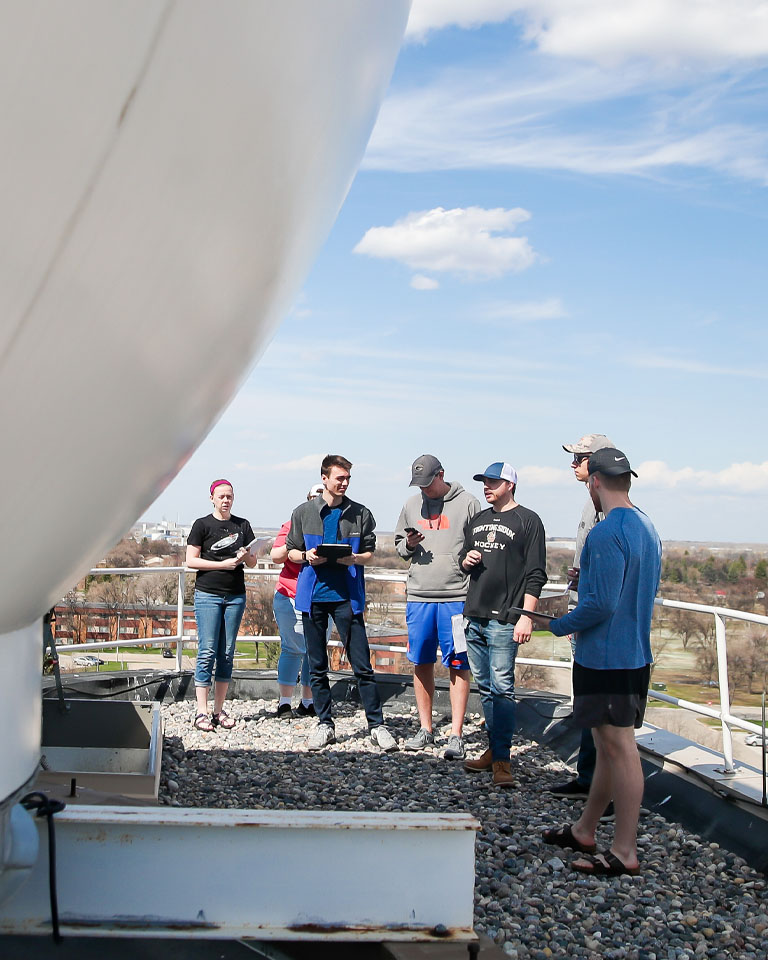Combined Atmospheric Science Degree
Accelerate your education with a combined degree in Atmospheric Sciences and join the next generation of atmospheric experts.
If you’re looking for the straightest line from education to professional, a UND Master of Science (M.S.) degree is right for you. And, now with the option of a combined degree program, you can complete your higher education in an efficient way. With this graduate program, you’ll gain the hands-on and practical expertise that today’s employers are looking for.
- Program type:
- Accelerated (Bachelor’s and Master’s)
- Format:
- On Campus
- Est. time to complete:
- 5 years
- Credit hours:
- 150
Why earn a combined Atmospheric Sciences degree?
Combined Atmospheric Sciences Degree at UND
-
Faculty hire students to help with their research.
-
Many courses include a lab component that provide students with experiential (or hands-on) learning.
-
Complete a B.S. and a M.S. in Atmospheric Sciences in 5 years.
-
Computer-based data analysis techniques are an integral part of the undergraduate program, including the use of the latest technology.
-
Atmospheric and Pre-Atmospheric Science majors are eligible to live in the Atmospheric Sciences Living & Learning Community.
What can you do with a combined Atmospheric Sciences degree?
Combined Atmospheric Sciences Degree Courses
Leaders that Do
The University of North Dakota's Storm Chase course puts you in the heart of the action! Each summer, UND students embark on a two-week academic adventure, learning about weather patterns, storm development, and forecasting – all while chasing supercells across the Great Plains.
UND students produce daily forecasts, working on weather tracking, writing scripts and on-screen experience. Students also learn how to build thermometers to gain real-world understanding of how instruments work.

